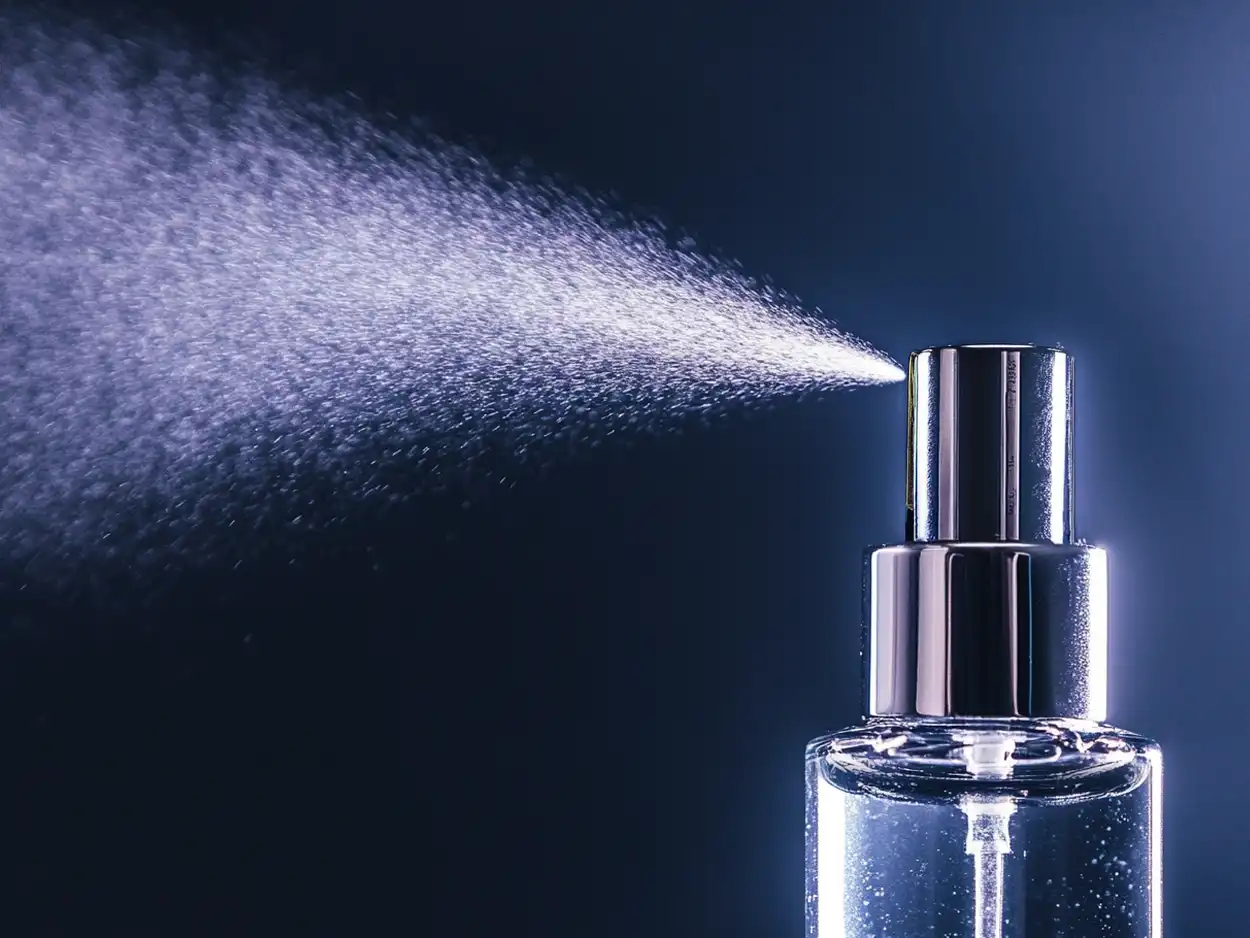Perfume is a personal signature, a subtle whisper of your presence. But like any art form, there’s a technique to applying it just right!
This guide will walk you through the nuances of perfume application, ensuring you leave a lasting impression for all the right reasons.
Essential Application Techniques
There are several techniques you can use to make the most of your favorite scent:
Direct Skin Application
Ok, this one is obvious, but it needs elaborating on; applying perfume directly to your skin is the most common and effective method. This allows the scent to mix with your natural oils, creating a unique fragrance that’s distinctly you. Focus on warm areas of your body, as heat helps to diffuse the scent. The inside of your wrists, the base of your throat, and behind your ears are all excellent spots.
When applying directly to skin, hold the bottle about 3-6 inches away from your body. This distance allows for an even distribution without oversaturating any one area. If your perfume doesn’t have a spray nozzle, you can apply it with your fingertips. Just be sure your hands are clean to avoid transferring any oils or residues that might alter the scent.
For longer-lasting results, apply your perfume right after showering. Your skin is most absorbent when it’s slightly damp, which can help lock in the fragrance. Just make sure you’re not still wet, as water can dilute the perfume.
Targeting Pulse Points
Pulse points are locations on your body where blood vessels are close to the skin surface, creating more heat. This heat helps to amplify and diffuse your perfume throughout the day.
Key pulse points include the inside of wrists, base of throat, behind ears, inside elbows, behind knees, and ankles. When applying to pulse points, use a light touch. A small dab or quick spritz is usually sufficient. These areas will warm up throughout the day, continuously releasing your fragrance.
The Spray and Walk Method
The spray and walk method involves creating a scent cloud that you walk through. Here’s how to do it effectively: Hold the perfume bottle about 12 inches in front of you, slightly above your head. Spray 2-3 pumps in a straight line.
Immediately walk forward through the mist. This technique ensures a light, even coverage over a larger area of your body and clothes. It’s particularly useful for stronger scents where you want a more subtle application. The mist will settle on your hair, clothes, and exposed skin, creating a well-rounded fragrance effect.
Avoiding Rubbing
After applying perfume, especially to your wrists, it might be tempting to rub your wrists together. However, this is a habit best avoided for several reasons. Friction creates heat, which can break down the molecular structure of the perfume, altering its scent.
Rubbing can cause the top notes (the initial, lighter scents) to evaporate more quickly, rushing the dry-down process. It can also bruise the fragrance, causing it to lose its intended character. Instead of rubbing, simply allow the perfume to dry naturally on your skin.
If you’ve applied to your wrists, keep them separate until the perfume has dried. This preserves the integrity of the scent and allows it to develop as intended by the perfumer.
Optimal Timing and Layering Strategies
Timing is everything, right? Well, it matters for perfume too. Ever thought about spritzing right after a shower? It’s actually a great move. Your skin is clean and your pores are open, which helps the fragrance stick around longer. Plus, the moisture on your skin can help diffuse the scent evenly.
Now, let’s talk about layering. No, we’re not discussing your winter wardrobe – we’re talking scents! If you’re using scented body lotion or deodorant, think about how they’ll play with your perfume. Matching or complementary scents can create a more complex, interesting aroma that lasts all day.
And hey, don’t be scared to mix things up. Layering different perfumes can be like being your own fragrance mixologist. Start with a base scent, then add lighter, more delicate notes on top. It’s a fun way to create a signature scent that’s uniquely you.
Just remember, when it comes to layering, less is more. You want to intrigue people, not overwhelm them. Start light and build up slowly until you find the perfect balance.
Strategic Placement
Beyond the traditional skin application, there are other creative ways to wear your favorite scent.
Clothing can be an excellent carrier for fragrance. Spraying perfume on your outfit can make the scent last longer and create a subtle trail as you move – just be aware that, because the fragrance isn’t on your skin, it probably won’t project as far, and the dry-down will more than likely smell slightly different to how it does on your skin.
Fabrics like wool and cotton are particularly good at retaining scents; a light mist on the collar of your shirt or the inside of a jacket can be very effective. However, exercise caution with delicate materials or light-colored clothes, as some perfumes may leave stains. It’s always wise to test on an inconspicuous area first.
Hair is another option for fragrance application, but it requires a gentle approach. Directly spraying perfume onto your locks isn’t recommended, as the alcohol content can dry out your hair. Instead, try this clever technique: lightly spritz your hairbrush with perfume, then run it through your hair. This method distributes the scent evenly without risking damage to your tresses.
Managing Perfume Intensity
Let’s talk about the art of not overdoing it. You know that person who walks into a room and their perfume arrives five minutes before they do? Yeah, we don’t want to be that person.
Start light – you can always add more, but it’s hard to take it away once it’s on. Begin with just a spritz or two and see how it develops on your skin. Perfumes change over time, so give it a few minutes before deciding if you need more.
Now, about dosage – it really depends on the strength of your perfume. An eau de parfum is more concentrated than an eau de toilette, so you’ll need less of it. A good rule of thumb? If you can smell your own perfume all day, it’s probably too much.
Reapplication can be tricky. Your nose gets used to scents pretty quickly, so you might think your perfume has faded when others can still smell it. If you do need to reapply, focus on pulse points or areas where the scent has actually worn off, like your wrists if you wash your hands a lot.
Remember, the goal is to be pleasantly fragrant, not overpowering. You want people to notice you, not your perfume!
Avoiding Common Application Pitfalls
Even perfume pros can fall into some common traps. Let’s steer clear of these mistakes to keep your scent game strong.
Applying to wet skin might seem like a good idea, but it actually dilutes the fragrance and can make it evaporate faster. Wait until you’re dry after a shower before spritzing.
The “spray and walk through” method we mentioned earlier? It’s not for everyone or every scent. It works best with lighter fragrances. For stronger scents, you’re better off with targeted application to avoid overdoing it.
Timing matters when it comes to jewelry too. Put your perfume on before your bling. Fragrances can tarnish certain metals, especially if sprayed directly on them. Plus, metals can alter how a scent smells on your skin.
One last tip: pay attention to how close you hold the bottle when spraying. Too close, and you’ll get an overwhelming concentration in one spot. Too far, and most of it might miss you entirely. Aim for about 6 inches away for that perfect, even application.
Wrapping Up
Mastering the art of perfume application is a nuanced endeavor. Small mistakes can significantly alter how your fragrance performs and is perceived. By paying attention to the details – from where you apply to how much you use – you can ensure your signature scent enhances rather than overwhelms.
The right application technique can transform an ordinary fragrance into something extraordinary, while poor application can turn even the finest perfume into an olfactory faux pas. It’s about understanding your skin, your scent, and the environment you’re in. With practice and mindfulness, you’ll develop an intuitive sense of how to make your perfume work for you in any situation.
Remember, the goal isn’t just to smell good, but to create a subtle, intriguing aura that draws people in without overwhelming them. With these techniques in your arsenal, you’re well-equipped to make a refined and unforgettable impression, leaving behind not just a scent, but a memory.

